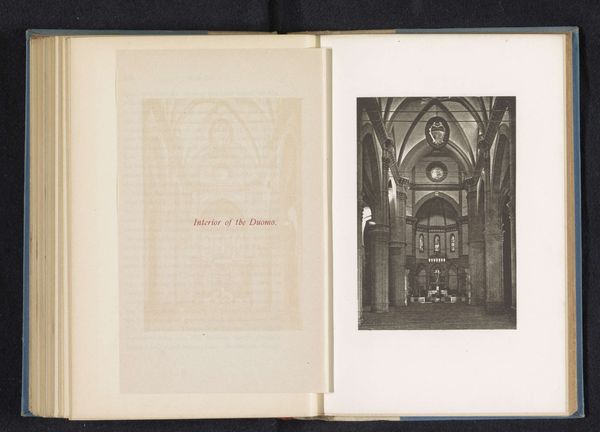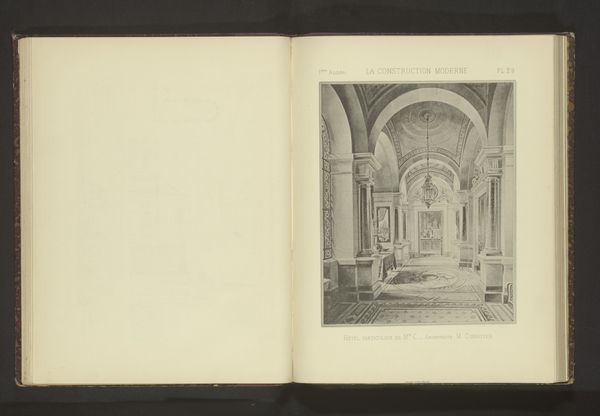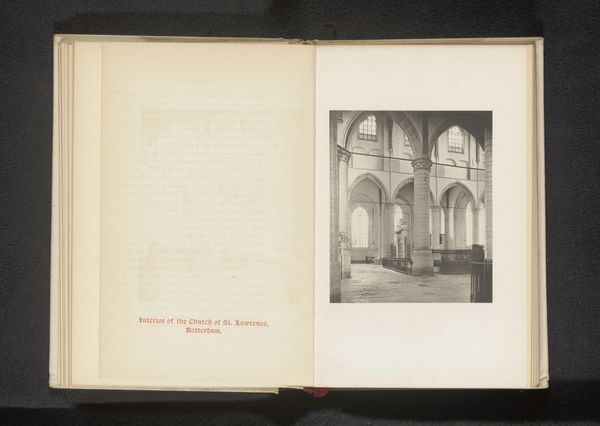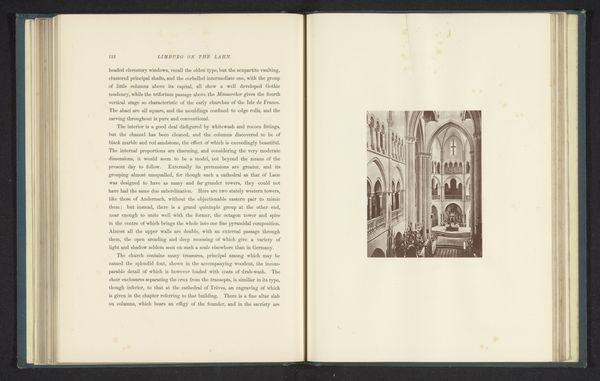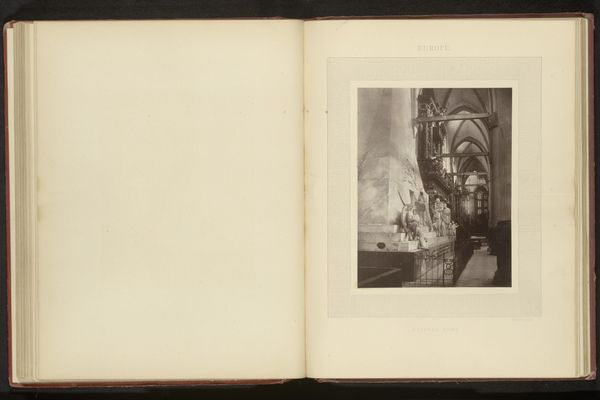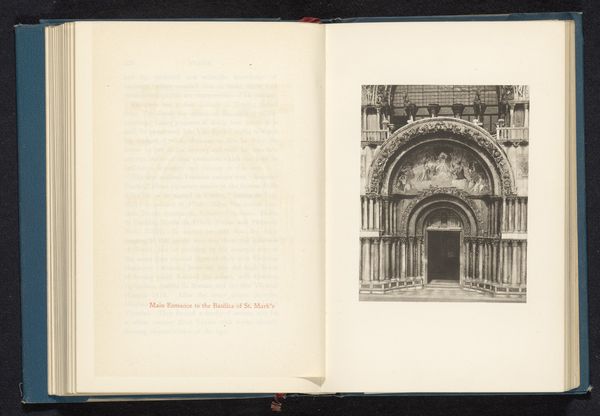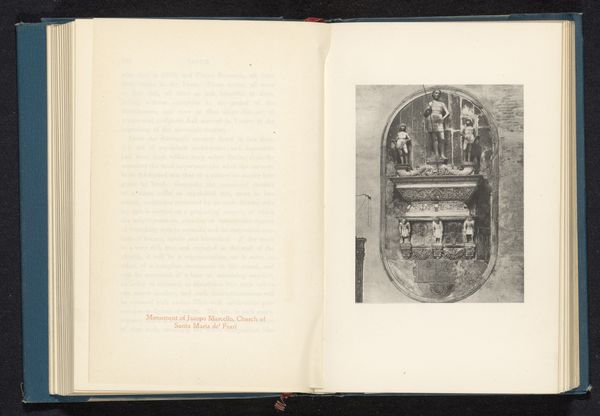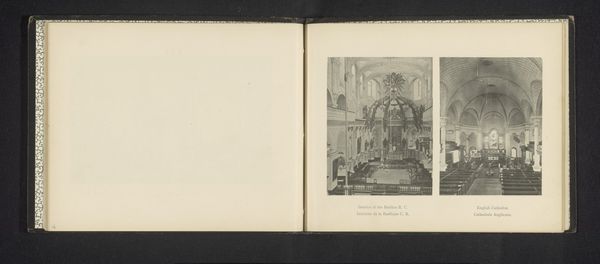
Dimensions: height 116 mm, width 92 mm
Copyright: Rijks Museum: Open Domain
Curator: Looking at this photograph, my first thought is the solemnity and reverence captured. Editor: This gelatin silver print, likely created between 1882 and 1892, depicts the interior of the San Zaccaria church in Venice, presenting the choir area in particular detail. Curator: Immediately, the stark contrast of the black and white underscores the permanence and historical weight of the Church and the ritual embodied by the imagery within. Notice how the architectural components—columns, arches—become visual pathways. Editor: Yes, and those architectural elements carry so much iconographic meaning. Columns referencing strength, arches symbolizing heaven… But let’s consider this church not just as a place of worship. Venice at the time this photograph was taken faced social tensions, a shifting political landscape. How did faith intersect with these tensions? Was it refuge, oppressor, or something in between? Curator: Absolutely. These grand interior shots were often circulated to support European ideas of cultural exceptionalism and imperialism. In thinking about Venetian painting, do we see a tension between religious orthodoxy and a burgeoning identity reflected through these photographs? What societal narratives are truly represented? Editor: The church as a site where heaven touches Earth. The careful balance in the composition, between darkness and light, emphasizes this dualism. Think of the symbolic use of gold. Here we lack color, but the mind fills in the glittering altar and its association with divinity. Curator: It becomes vital to see not just the apparent harmony but the points of contestation: class struggles playing out in these hallowed spaces, the complicated relationship between piety and state power, and, beyond that, to consider these narratives with our current understanding of exploitation and capital within the region and era. Editor: Yes, through visual echoes like these architectural signifiers and understanding their psychological impact on worshippers, we access a rich history, revealing continuous symbolic languages and traditions. Curator: Precisely, seeing the print in terms of the historical, ideological structures influencing its making, viewing, and enduring legacies becomes critical. Editor: A potent reminder that the past still speaks, influencing our present understanding through image and symbol.
Comments
No comments
Be the first to comment and join the conversation on the ultimate creative platform.
